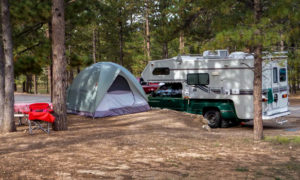
On August 30, the National Park Service announced a new electric bicycle (e-bike) policy for national parks, expanding recreational opportunities and accessibility. The policy supports Secretary’s Order 3376 (PDF), signed by U.S. Secretary of the Interior David Bernhardt on August 29, that directs Department of the Interior (DOI) bureaus to create a clear and consistent e-bike policy on all federal lands managed by the department. The policy also supports Secretary’s Order 3366 (PDF) to increase recreational opportunities on public lands.
This new policy will enhance fun and healthy recreational opportunities for visitors to our national parks and support active transportation options.
- E-bikes make bicycle travel easier and more efficient, because they allow bicyclists to travel farther with less effort.
- E-bikes provide expanded options for visitors who wish to ride a bicycle but may be limited because of physical fitness, age, disability, or convenience.
- When used as an alternative to gasoline- or diesel-powered modes of transportation, e-bikes can reduce greenhouse gas emissions and fossil fuel consumption, improve air quality, and support active modes of transportation for park staff and visitors.
- Similar to traditional bicycles, e-bikes can decrease traffic congestion, reduce the demand for vehicle parking spaces, and increase the number and visibility of cyclists on the road.
Parks will implement the new policy before the next 30 days, so be sure to check with the park you’re visiting for details about where e-bikes are permitted and any other considerations specific to that park. Similar to traditional bicycles, e-bikes are not allowed in designated wilderness areas. During the implementation period, park superintendents will work with their local communities, staff, and partners to determine best practices and guidance for e-bike use in their parks. Superintendents will retain the right to limit, restrict, or impose conditions of bicycle use to ensure visitor safety and resource protection.
Tips for Visiting National Parks







